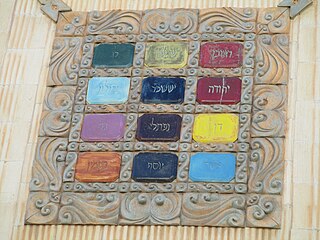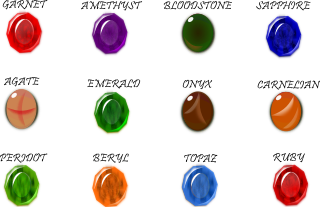
The International Peace Belt is a living symbol of the peaceful unity of all nations.

The International Peace Belt is a living symbol of the peaceful unity of all nations.
In the summer of 2003, Wendy Black Nasta (a Connecticut-based jewelry designer) and her apprentices Katie Rosenblatt and Margaret Sola began working on the belt. They designed and built a sterling silver belt draped with coins and gems representing, to date, 155 countries. [1]
When it was completed 115 countries were represented with the ultimate goal of having all 191 countries represented. [2]
The following countries have coins incorporated into the belt:
Afghanistan, Argentina, Austria, Bahamas, Belgium, Brazil, Bermuda, Belize, British Caribbean Territories (Eastern Group 1961), Bangladesh, Chile, Columbia, Central Africa, Canada, China, Czech Republic, Costa Rica, Cayman Islands, Dominican Republic, Denmark, Egypt, East Africa, East Caribbean States, Euro (1 cent, 5 cent, 10 cent), Finland, France, Greece, Guatemala, Ghana, Germany, Hong-Kong, Honduras, Israel, Indonesia, India, Ireland, Iraq, Italy, Jamaica, Jordan, Latvia, Luxembourg, Mexico, Magyar, Malaysia, Malta, Morocco, Netherlands, Poland, Philippines, Peru, Portugal, Pakistan, Sweden, South Korea, Singapore, Spain, Trinidad and Tobago, Thailand, United Arab Emirates, United States, Uruguay, Vatican City, Venezuela, Vietnam, West Africa, Yugoslavia, Zambia.
The following stones are incorporated into the belt:
Amber, amytrene, amethyst, aventurine, aquamarine, agate, abalone shell (from the Siletz Tribe in Oregon), black onyx, bone, bear fetish (pipestone), bamboo coral, blue shell, carnelian agate, citrine, coral (Italian), carved wood, eilot, emerald, fluorite, goldstone, garnet, green onyx, green pearl, green tourmaline, hematite, hessonite garnet, iolite, jade (carved Buddha from Vietnam), jasper, jet, kyanite, lapis lazuli, lemon citrine, labradorite, mother-of-pearl carved fetishes, malachite, moonstone, peridot, pearls (white, grey, green, red, brown), quartz crystal, rutilated quartz, rainbow moonstone, rubellite, rose quartz, spectrolite, sodalite, scarab (from Egypt), sapphire, soapstone, smoky quartz, turquoise, tourmaline, tiger eye, vasuvialite, watermelon tourmaline, yellow onyx.
The International Peace Belt relies on caretakers and volunteers to travel from one destination to the next.
Wendy’s cousin Sara Morgues and friend Meghan Uhrich were the belt’s first caretakers. The pair were traveling to India to attend the Golden Jubilee for World Peace honoring the 50th birthday of Amritanadamayi (Aka Ammachi), a saint and guru from India. Sara offered to carry the belt and have it blessed by Ammachi. The belt would up being worn by a person from Ammachi’s ashram and led the peace procession of 150,000 people, thus taking on a life of its own. [2]
While in India, there was an interest in raising funds to pay for the extended travel of the belt. It was then that Wendy officially established the non-profit foundation Artists for World Peace to raise money for the ongoing travels and missions of the International Peace Belt.
The foundation has grown into a registered 501(c)(3) Non Profit organization, raising funds for grass roots organizations in communities around the world through the arts. The Children of Peace program was created to pay for the living and educational expenses of children all over the world. [3]

Amethyst is a violet variety of quartz. The name comes from the Koine Greek αμέθυστος amethystos from α- a-, "not" and μεθύσκω methysko / μεθώ metho, "intoxicate", a reference to the belief that the stone protected its owner from drunkenness. Ancient Greeks wore amethyst and carved drinking vessels from it in the belief that it would prevent intoxication.

Agate is the banded variety of chalcedony, which comes in a wide variety of colors. Agates are primarily formed within volcanic and metamorphic rocks. The ornamental use of agate was common in Ancient Greece, in assorted jewelry and in the seal stones of Greek warriors, while bead necklaces with pierced and polished agate date back to the 3rd millennium BCE in the Indus Valley civilisation.

Jewellery consists of decorative items worn for personal adornment, such as brooches, rings, necklaces, earrings, pendants, bracelets, and cufflinks. Jewellery may be attached to the body or the clothes. From a western perspective, the term is restricted to durable ornaments, excluding flowers for example. For many centuries metal such as gold often combined with gemstones, has been the normal material for jewellery, but other materials such as glass, shells and other plant materials may be used.

Quartz is a hard, crystalline mineral composed of silica (silicon dioxide). The atoms are linked in a continuous framework of SiO4 silicon–oxygen tetrahedra, with each oxygen being shared between two tetrahedra, giving an overall chemical formula of SiO2. Quartz is, therefore, classified structurally as a framework silicate mineral and compositionally as an oxide mineral. Quartz is the second most abundant mineral in Earth's continental crust, behind feldspar.

Chalcedony ( kal-SED-ə-nee, or KAL-sə-doh-nee) is a cryptocrystalline form of silica, composed of very fine intergrowths of quartz and moganite. These are both silica minerals, but they differ in that quartz has a trigonal crystal structure, while moganite is monoclinic. Chalcedony's standard chemical structure (based on the chemical structure of quartz) is SiO2 (silicon dioxide).
Lustre or luster is the way light interacts with the surface of a crystal, rock, or mineral. The word traces its origins back to the Latin lux, meaning "light", and generally implies radiance, gloss, or brilliance.

Onyx is the parallel-banded variety of chalcedony, an oxide mineral. Agate and onyx are both varieties of layered chalcedony that differ only in the form of the bands; agate has curved bands while onyx has parallel bands. The colors of its bands range from black to almost every color. Specimens of onyx commonly contain bands of black and/or white. Onyx, as a descriptive term, has also been applied to parallel-banded varieties of alabaster, marble, calcite, obsidian, and opal, and misleadingly to materials with contorted banding, such as "cave onyx" and "Mexican onyx".

The priestly breastplate or breastpiece of judgment was a sacred breastplate worn by the High Priest of the Israelites, according to the Book of Exodus. In the biblical account, the breastplate is termed the breastplate of judgment, because the Urim and Thummim were placed upon it. These elements of the breastplate are said in the Exodus verse to carry the judgement of God concerning the Israelites at all times.

India possesses a wide spectrum of dimensional stones that include granite, marble, sandstone, limestone, slate, and quartzite, in various parts of the country.

A birthstone is a gemstone that represents a person's period of birth, which is usually the month or zodiac sign. Birthstones are often worn as jewelry or as a pendant necklace.
A range of gemstones are mentioned in the Bible, particularly in the Old Testament and the Book of Revelation. Much has been written about the precise identification of these stones, although largely speculative.

Hardstone carving, in art history and archaeology, is the artistic carving of semi-precious stones, such as jade, rock crystal, agate, onyx, jasper, serpentinite, or carnelian, and for objects made in this way. Normally the objects are small, and the category overlaps with both jewellery and sculpture. Hardstone carving is sometimes referred to by the Italian term pietre dure; however, pietra dura is the common term used for stone inlay work, which causes some confusion.
Mining is an important industry in Pakistan. Pakistan has deposits of several minerals including coal, copper, gold, chromite, mineral salt, bauxite and several other minerals. There are also a variety of precious and semi-precious minerals that are also mined. These include peridot, aquamarine, topaz, ruby, emerald, rare-earth minerals bastnaesite and xenotime, sphene, tourmaline, and many varieties and types of quartz.

There are many types of gemstones of Pakistan. They can be found among the nation's three mountain ranges - the Hindu Kush, the Himalayas, and the Karakoram - in the provinces of Khyber Pakhtunkhwa, Gilgit-Baltistan, Balochistan, and the Federally Administered Tribal Areas. The gemstone industry in Pakistan has the city of Peshawar as its hub, and there are many companies working in it.
The Women's Torah Project (WTP) was an initiative to have the first Torah scroll scribed entirely by women. The project began in 2003 and was completed in Seattle in 2010. Wendy Graff was the leader of WTP. The WTP was commissioned by the Seattle-based Kadima Reconstructionist Community.
Mother/Land is a book of poems by the self-identified Abenaki descent author and artist Cheryl Savageau published in 2006 by Salt Publishing. According to Salt Publishing's website, Mother/Land “radically re-maps New England as Native American space”. The website for Dawnland Voices notes that some specific New England places that Savageau writes about in her poems include the Pemigewasset River in New Hampshire and Lake Quinsigamond in Massachusetts.

The Schaffhausen onyx is an ancient cameo, one of the most important Augustan-era hardstone carvings and now one of the highlights on display in the Museum zu Allerheiligen in Schaffhausen, Switzerland. In the 13th century, the cameo was given an ornate gold and silver setting as well as a medallion on the reverse.